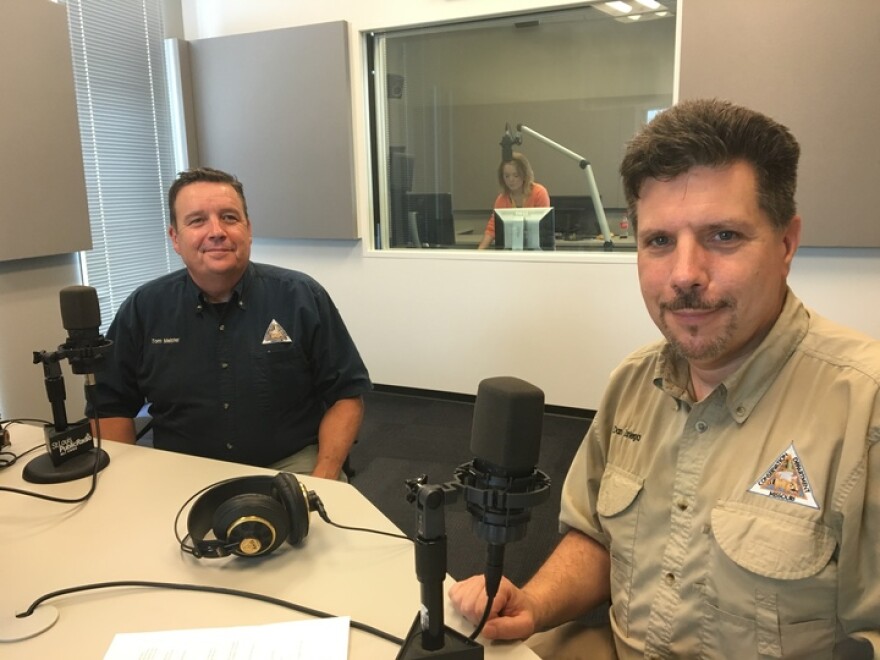Have you noticed the millions of armadillos wandering around the St. Louis area and across Missouri this summer? Okay, maybe not millions, but they’re there and that’s weird, right? You’re not alone in thinking this.
You often see dead armadillos on highways because the animal jumps a few feet off the ground when it is frightened by loud noises. In the wild, that works to scare off predators. On a highway, however, that is about the height necessary to be hit by vehicle instead of making its way between the wheels.
Two guests to St. Louis on the Air from the Missouri Department of Conservation said that the armadillos’ appearance in Missouri is "a bit of a mystery." The armadillos are coming to Missouri from Texas, where they came from Central and South America before.
“A big theory is that our winters over the past few decades just simply have not been as cold as usual and that gives the armadillos more of a window in which they can survive,” said Dan Zarlenga, MDC’s Metro Media Specialist.
Tom Meister, the Missouri Department of Conservation’s Wildlife Damage Specialist, said that armadillos don’t have the capability to store fat like other mammals that migrate. If they are able to access foods to sustain themselves during the winter, however, armadillos can survive through the colder season. An armadillo can survive through the winter with less than 7-8 days of solid frost.
Armadillos aren’t the only species making an appearance in Missouri, but many of the other animals are actually native to the land — they’re just making a reappearance. Black bears, mountain lions, and reintroduced elk are among those species. Nutria are not native to Missouri, however, like armadillos, they are a non-indigenous species moving into the state.

Black bears have been spotted in Jefferson, Franklin and Warren counties, but typically take up residence in more southern areas of the state. You can follow their sightings in an interactive map here.
The presence of black bears may make summertime campers consider their food storage options. Purchasing a bear box, hanging food in trees or keeping your food in the car is a good way to reduce the chance a bear might come to your campsite looking for food.
Mountain lions are another species making a comeback, migrating through Missouri from South Dakota along the bigger rivers. However, there’s no established, breeding population of mountain lions in the state of Missouri, currently.
“They’re just out there looking for their own territory and perhaps a female but, what happens is there are no females out in this area, so they just keep looking,” Meister said.
While mountain lions are not particularly interested in humans, if you find yourself near one, Meister said that you can make yourself seem bigger or make noise and scare the animal off.
Listen to further discussion of the animals coming to and through Missouri:
Editor's note: This post was updated on July 20 to reflect that nutria are not an indigenous species in Missouri.
St. Louis on the Air brings you the stories of St. Louis and the people who live, work and create in our region. St. Louis on the Air host Don Marsh and producers Mary Edwards, Alex Heuer and Kelly Moffitt give you the information you need to make informed decisions and stay in touch with our diverse and vibrant St. Louis region.
Send questions and comments about this story to feedback@stlpublicradio.org.
Support Local Journalism
St. Louis Public Radio is a non-profit, member-supported, public media organization. Help ensure this news service remains strong and accessible to all with your contribution today.

